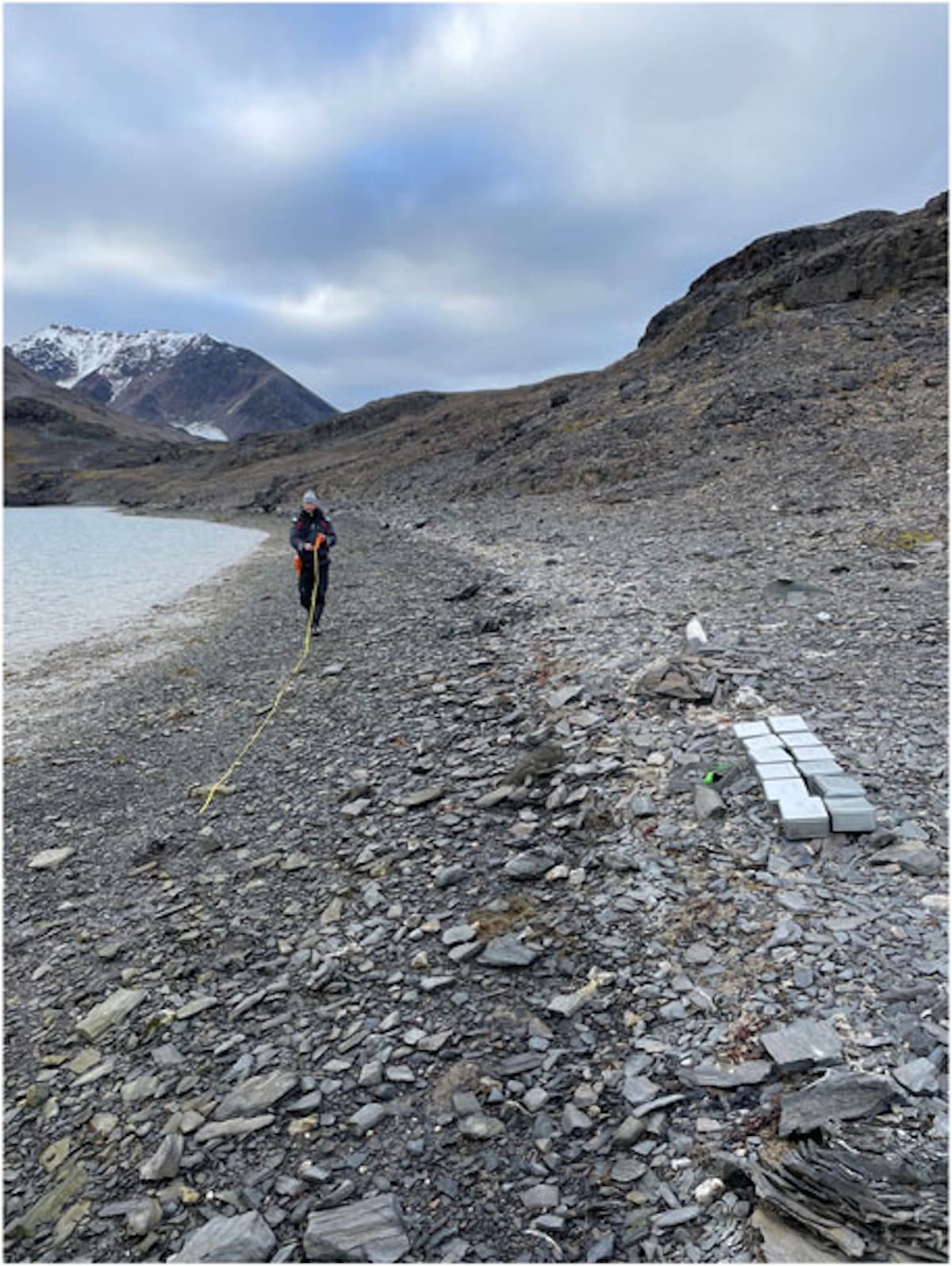Tourists Help Scientists Find Microplastics on Remote Arctic Beaches

 Why you can trust us
Why you can trust us
Founded in 2005 as an Ohio-based environmental newspaper, EcoWatch is a digital platform dedicated to publishing quality, science-based content on environmental issues, causes, and solutions.
Citizen scientists visiting the Arctic have assisted an international research team in finding microplastics on remote beaches for a new study.
The amount of plastic being produced all over the world has led to the tiny pieces of plastic debris being found everywhere, including in sea ice, inside nature reserves and on the floor of the ocean.
Scientists are afraid ocean currents will cause plastic accumulation in the Arctic, damaging long-established and fragile ecosystems.
“Plastic pollution is now ubiquitous. It is found on land and in soil and most rivers of the world,” said Dr. Bruno Walther of the Alfred Wegener Institute, Helmholtz Center for Polar and Marine Research and lead author of the study, as Frontiers reported. “It is even found in the polar oceans and the deepest ocean trenches.”
In order to fill in gaps in their knowledge of the type and scale of microplastics polluting the Arctic, the researchers asked tourists on cruises to collect samples.
The study, “Citizen scientists reveal small but concentrated amounts of fragmented microplastic on Arctic beaches,” was published in the journal Frontiers in Environmental Science.
In 2016, 2017, 2021 and 2022, four cruises carrying tourists visited the Svalbard archipelago — the northernmost landmass in Europe — and collected samples of sediment, reported Frontiers.
At first, metal tools were used to take single samples from beaches and sent, along with photographs and metadata, to record sampling locations. This method was later expanded to entire beaches with sampling grids.
“Citizen science is possible even in remote Arctic beaches,” Walther said. “This helps to cut down on traveling time, CO2 emissions and costs for scientists, and it helps to engage citizens in a global environmental issue.”
After the samples were dried, weighed and measured, they were filtered to catch particles one millimeter or larger. The scientists theorized that smaller plastic particles don’t become airborne easily, which they tested.
The researchers discovered that microplastics of the larger size were very concentrated, but not widespread. However, the overall level of pollution was similar to areas that had been thought to have much more plastic pollution than beaches in the Arctic.
The team identified two types of sources for the plastic: polyester-epoxide particles, likely from ship equipment or color coating, and polypropylene fibers that were probably from a fishing net.
“Plastic debris from fisheries is the most direct point of entry to the marine realm, and is often particularly important in remote areas,” said author Dr. Melanie Bergmann of the Alfred Wegener Institute, according to Frontiers. “There is an active fishing fleet operating in the waters surrounding Svalbard but also in the North Sea and north Atlantic. Some of the waste that they emit drifts to the beaches of Svalbard.”
Conditions on the Arctic beach — continuous sunlight all summer, high humidity caused by fog and repeated freeze cycles — looked to have caused the netting to fragment very fast. If the same type of quick fragmentation was happening elsewhere, microplastics could be introduced there rapidly as well.
“We still need more sampling in the Arctic, in more places and in more regular time intervals to monitor the situation,” Walther said, as Frontiers reported.
“It should be noted that we only analyzed microplastics particles larger than 1mm. This was because of the citizen science approach and to avoid potential airborne contamination by small particles,” added Bergmann. “But our previous studies on Arctic water, ice, and sediment samples have shown that more than 80% of the particles were much smaller. So, we probably would have found more particles, if we had looked for smaller particles, too.”
Subscribe to get exclusive updates in our daily newsletter!
By signing up, you agree to the Terms of Use and Privacy Policy & to receive electronic communications from EcoWatch Media Group, which may include marketing promotions, advertisements and sponsored content.

 233k
233k  41k
41k  Subscribe
Subscribe 




